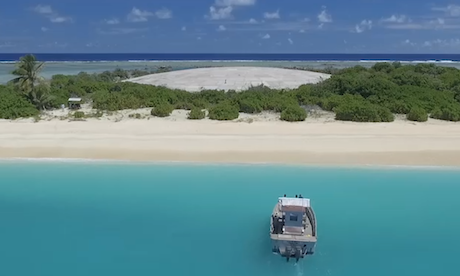UN Secretary-General Antonio Guterres has recently toured the South Pacific to discuss climate change.
In Fiji last week, he told a crowd about “a kind of coffin” built by the US in the Marshall Islands to house the deadly radioactive debris from the 1980s.
The “coffin” is the product of a belated American response to the nuclear testing of the 1940s and 1950s.
In 1977, the Defence Nuclear Agency began a sustained cleanup of the nuclear debris remaining on Enewetak Atoll, a slender archipelago in the Marshall Islands’ northwest corner.
The material was transported to Runit Island where a 100-metre crater remained from a May 1958 test explosion.
For three years, the American military dumped the material into the crater.
In 1980, a massive concrete dome – 45 centimetres thick and shaped like a flying saucer – was placed over the fallout debris, sealing off the material on Runit.
The US$218 million (NZ$335m) project was supposed to be only temporary until a more permanent site was developed, according to the Guardian newspaper. However, no further plans were ever hatched.
Now, disrepair and rising sea tides are making it a dangerously vulnerable site.
A strong storm could breach the dome, releasing the deadly nuclear waste.
The staying power of the material is a problem. Cracks reportedly have started to appear in the dome.
The concrete is only 45 centimetres thick and the ocean is rising.
The crater was never properly lined, so rising seawater could breach the structural integrity.
“The bottom of the dome is just what was left behind by the nuclear weapons explosion,” Michael Gerrard, the chair of Columbia University’s Earth Institute told the ABC. “It’s permeable soil. There was no effort to line it. And therefore, the seawater is inside the dome.”
According to the Guardian, a 2013 report by the Energy Department admitted radioactive material may have already begun to leak from the dome but cautioned the health risks were likely low.
“That dome is the connection between the nuclear age and the climate change age,” climate change activist Alson Kelen told the ABC.
Source
- stuff.co.nz
- theguardian.com
- Image: Screenshot abc.net.au
